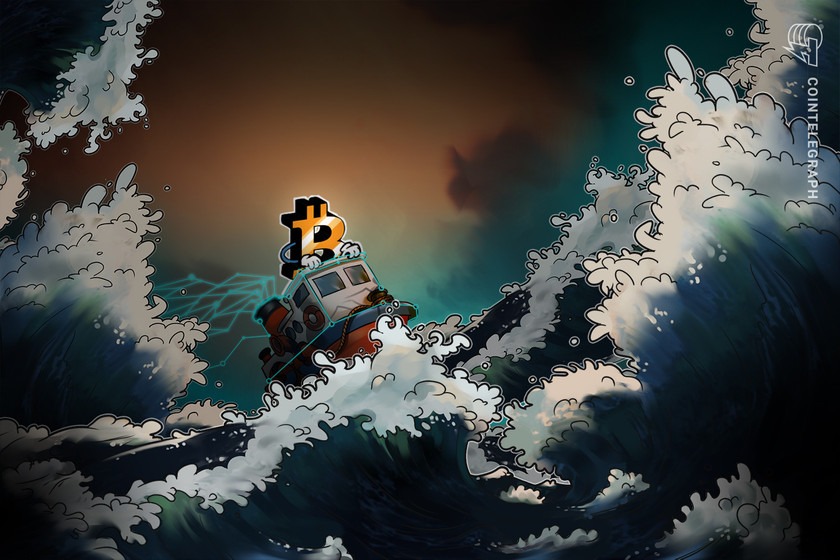Minting, distributing and selling NFTs must involve copyright law
Everyone is wild about nonfungible tokens (NFTs). The first half of 2021 alone saw NFTs from Andy Warhol, NFTs of the code for the World Wide Web, the first-ever Tweet and, of course, the famous $69 million NFT sale of Beeple’s “Everydays.” Whether this explosive rise of NFTs is a flash in the pan or the future of art and beyond is a hot topic of conversation. An emerging theme from that conversation is whether NFTs have a copyright problem. Copyright is engaged throughout the NFT process, but there is nothing inherent in an NFT itself to ensure that copyright rules are respected (or even considered).
The story of blockchain development in the cryptocurrency space is one of struggle against centralization and regulation. Cryptocurrency maximalists envision a “democratized” financial system, free from legislative control. NTFs grew out of this space and share some of this tendency to decouple from established institutions. With this decoupling of NFTs and copyright law, significant problems arise that affect both the purchasers of NFTs and the artists that create them.
Related: Nonfungible tokens from a legal perspective
Copyright problems
The first problem is ownership. Transferring an NFT does not — on its own — convey any property rights in the digital file linked in the NFT or any of the intangible rights associated with the artwork. Just like owning a painting does not give the owner the right to make copies of the painting, the owner of an NFT does not share in any of the exclusive rights that belong to the owner of the copyright in the associated work.
In many cases, owning the NFT does not even guarantee ownership of the digital file covered by the NFT (like the JPG of Beeple’s “Everydays”), which is not typically contained in the NFT. Instead, the NFT contains a link to the location where the digital file resides on an internet server. To mint an NFT, the minter stores a copy of the digital file on a server and then creates a blockchain token that contains a link to that file. If the hosting service closes its doors, the NFT will point to a dead link.
Second, the process of minting NFTs presents copyright problems for both copyright owners as well as NFT purchasers. Purchasers see the NFT as an imprimatur of authenticity, but anyone can mint an NFT of any digital file. Minting an NFT typically involves storing a copy of the digital file on a server, but only the owner of the copyright in the underlying work can make copies of that work. So, unless an NFT is minted by the copyright owner (or someone operating with their permission), the act of minting the NFT is an infringement of copyright. The promotion and sale of that NFT would likely involve additional infringements.
Unauthorized NFT minting is not just the result of malicious actors, either. A misunderstanding about copyright can lead to NFTs being minted without the proper permissions. As an example, the owners of a physical drawing by Jean-Michel Basquiat had intended to mint an NFT of the drawing until the Basquiat estate stepped in to point out that the owners of the drawing were not the owners of the underlying copyright.
Larger auction houses, like Christie’s and Sotheby’s, will offer assurances of an NFT’s provenance that is backed by their history and expertise. But most people aren’t buying their NFTs from established auction houses. Online NFT marketplaces like Rarible and OpenSea cannot verify that each NFT offered for sale was minted with the proper permission.
Related: Hot July at Christie’s: Over $93M in NFT sales and Art+Tech Summit 2021
The widespread distribution of unauthorized NFTs also weakens confidence in them, in general. If NFTs are to fulfill their potential as a new vehicle for building and exchanging the inherent value of creative works, the worlds of NFTs and copyright will need to start working together.
Potential solutions
The solution to these problems lies in bringing non-crypto expertise together with NFT development. Combining copyright knowledge with NFT development will lead to NFT solutions that understand, respect and leverage copyright law. One of the long-term potentials for NFTs is as a form of copyright ownership, and some firms are working toward marrying the worlds of copyright and crypto.
Related: Nonfungible tokens: A new paradigm for intellectual property assets?
One solution is to limit NFT sales to specialized auctions that deal with a limited number of NFTs. Firms that operate under this model limit NFT sales to auctions they control. These NFTs are curated and vetted by experts in advance. This solution solves the provenance problem with specialized expertise, but at the cost of accessibility for both artists and purchasers.
Validating and verifying copyright ownership must be a part of the NFT-minting process — for example, by bringing human beings into the minting process to gather evidence and support that serve as a package of proof that the person minting the NFT has the necessary permissions to do so. This package of proof is then stored online, and the NFT provides a link to the supporting documents. NFTs minted in this way are portable and can be sold and exchanged on any Ethereum-compatible NFT marketplace. In this way, artists are protected from unauthorized minting and purchasers can be sure that they are acquiring an NFT that has been responsibly minted by the authorized owner of the copyright.
Related: NFTs are a game-changer for independent artists and musicians
Bringing NFTs and copyright law
NFTs were conceived as digital assets, unique pieces of code that could hold value as a result of their scarcity. As the uses for NFTs expanded into the world of art and creativity, the ambitions for NFTs outpaced considerations of the legal consequences.
The technical process for minting, distributing and selling NFTs involves copyright law implications that have not been fully addressed. Without proper consideration for how copyright law applies, NFTs become problematic for both creators and consumers. In response, new firms are already emerging with solutions. Bringing copyright law expertise to bear on the creation and sale of NFTs will begin to solve these copyright problems and pave the way for NFTs to reach their full potential.
This article does not contain investment advice or recommendations. Every investment and trading move involves risk, and readers should conduct their research when making a decision.
The views, thoughts and opinions expressed here are the author’s alone and do not necessarily reflect or represent the views and opinions of Cointelegraph.
Harsch Khandelwal is the CEO at Ureeqa, a blockchain-based platform for protecting, managing and monetizing creative work. Harsch is an engineering gold medalist from the University of Waterloo and an Ivey scholar from the Richard Ivey School of Business. Over the past 20 years, he has built and managed companies in diverse industries, including technology, real estate and private equity.









